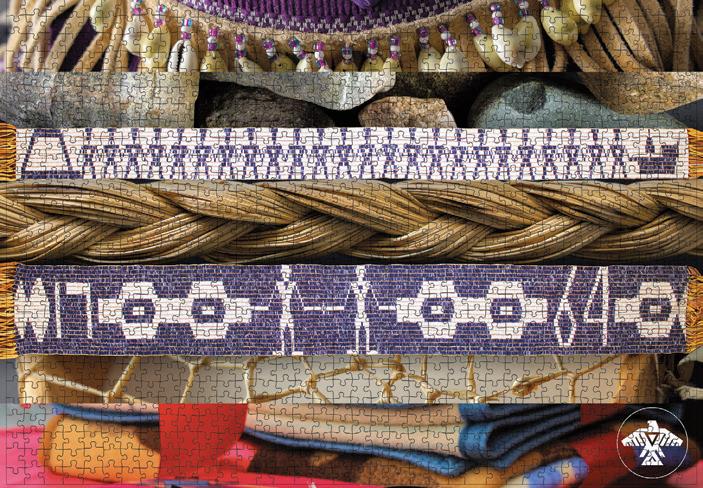
3 minute read
Bridging the Past and Present: Anishinabek’s Puzzle Resource for Understanding Treaties
Bridging the Past and Present: Anishinabek’s Puzzle Resource for Understanding Treaties
The Anishinabek Nation has a history of public education that stems back to the late 1990s. The Communications Department at the Anishinabek Nation has been sharing stories and Anishinaabe history and educating the people of Ontario about treaties and the treaty relationship. In order to have truth and reconciliation, the truth must first be told.
Two online resources have been created to help teachers bring treaty education into the classroom, available at anishinabek. ca/education-resources. Elders, Knowledge Keepers and community members contribute all the knowledge. The resources aim to explore various topics and connect to the work that has been done around treaties.
The Anishinabek Nation has created a Wampum Belt Puzzle, which complements the online resources Ezhi-nawending: How We Are Related, and Gdoo-Sastmoo Kii Mi: This is Our Understanding. The Wampum Belt Puzzle is available in three sizes: 192, 504, and 1,000 pieces. To order, email orders@anishinabek.ca
First Nations are recognized as the original occupants of the land. Treaties formalize the Crown and First Nations’ relationship based on trust and mutual respect. Treaties are the legally binding and sacred agreements that set out the rights, responsibilities and relationships of First Nations and federal and provincial governments.
Between 1781 and 1930, 46 treaties and other agreements were signed in what is now Ontario.
THE 24 NATIONS OR ‘PRESENTS’ BELT
Given in July 1764 by Sir William Johnson to Indian leaders at the Treaty of Niagara Congress. Accompanied by
thousands of dollars in gifts of guns, blankets, and cash, the presentation of the Belt came with the promise: “Your people will never want for the necessities of life so long as the world exists.” The Wampum depicts 24 Indian nations linked by a rope, one end of which is tied to a great rock representing Canada and the other to a British ship. The Treaty of Niagara promised that the Indians could only tug on the rope and the ship would bring all their material needs.
GCHI-MIIGISAABIGAN - THE TREATY OF NIAGARA COVENANT CHAIN WAMPUM BELT
Woven from 10,076 beads of the Quahog shell, the GchiMiigisaabigan (Great Wampum Belt) was given by Sir William Johnson, Superintendent of Indian Affairs for British North America, to an estimated 2,500 Chiefs and headmen at Niagara in July of 1764. The Treaty of Niagara represented the first formal agreement between the British Crown in Canada and the Anishinabek, who comprised the majority party over the 24 Great Lakes Nations represented at the Niagara Congress. The Covenant Chain is regarded by legal scholars as having constitutional significance. It represents the First Nations’ acceptance of the 1763 Royal Proclamation, which recognized their title to traditional lands, as well as their status as sovereign nations. During the War of 1812, over 10,000 warriors kept their promise of allegiance to the British and were instrumental in repelling American invaders.
Learn more about Wampum and treaties by watching this video










